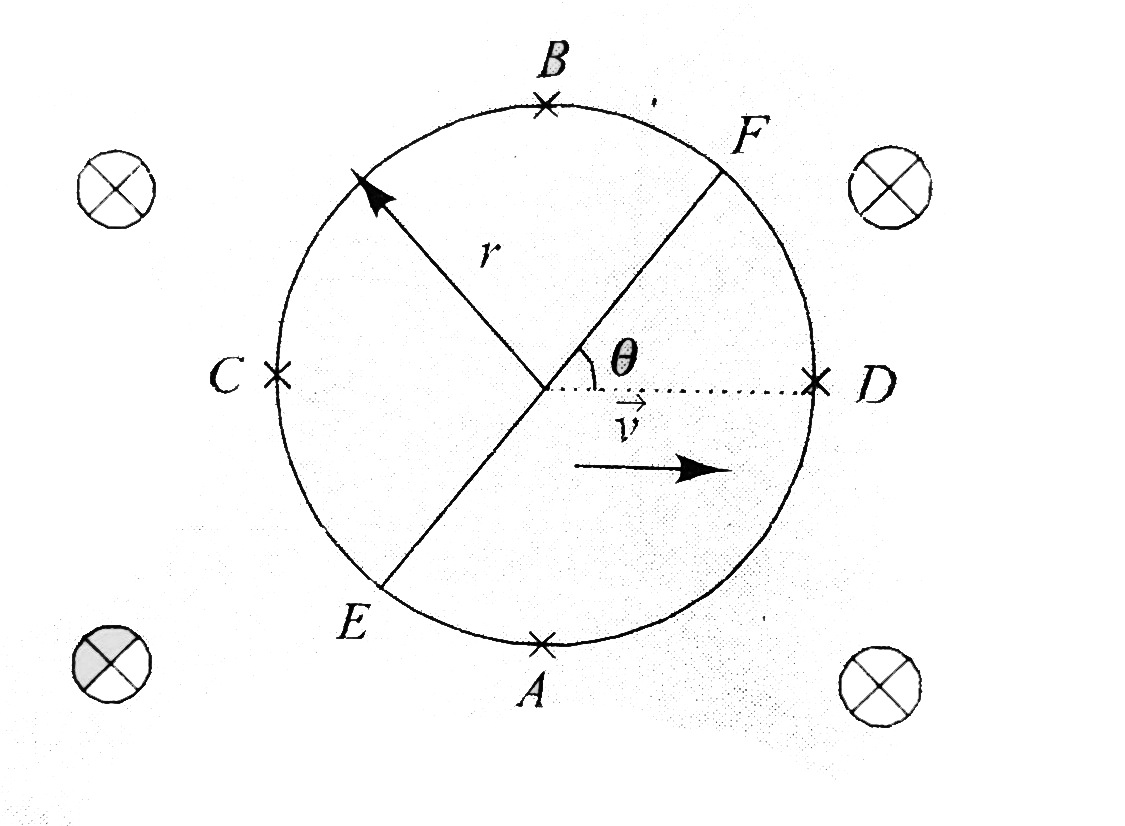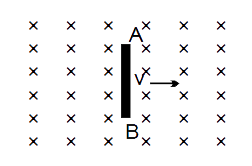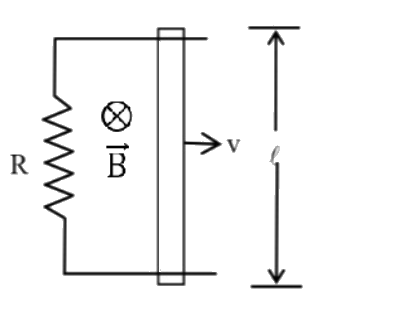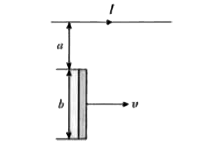A conducting rod is moved with a constant velocity v n a magnetic field. A potential difference appears across the two ends
if →υ∣∣→l
if →υ∣∣→B
if →l∣∣→B
None of these
The correct Answer is:D
if→υ∣∣→l or →υ∣∣→Bthen dϕdt is zero.Hence potential difference is zero.
Topper's Solved these Questions
- BOOK - RESONANCECHAPTER - ELECTROMAGNETIC INDUCTIONEXERCISE - Exercis-2 PART 115videos
ELECTROMAGNETIC INDUCTION
- BOOK - RESONANCECHAPTER - ELECTROMAGNETIC INDUCTIONEXERCISE - Exercis-2 PART 217videos
ELECTROMAGNETIC INDUCTION
- BOOK - RESONANCECHAPTER - ELECTROMAGNETIC INDUCTIONEXERCISE - Exercis-163videos
ELECTROMAGNETIC INDUCTION
- BOOK - RESONANCECHAPTER - ELECTRODYNAMICSEXERCISE - Advanced level problems31videos
ELECTRODYNAMICS
- BOOK - RESONANCECHAPTER - ELECTROSTATICSEXERCISE - HLP39videos
ELECTROSTATICS
Similar Questions
A circular loop of radius r moves with a constant velocity v in a region with uniform magnetic field B. Calculate the potential difference between two points (A,B), (C,D), and (E,F) located on the loop.
 View Solution
View SolutionA conducting wheel in which there are four rods of length 25 cm as shown in the figure is rotating with constant velocity 20 rad/s in a uniform magnetic field 8 T . The induced potential difference between its centre and rim will be
 View Solution
View Solution
Knowledge Check
- Question 1 - Select One
A rod AB moves with a uniform velocity v in a uniform magnetic field as shown in figure.
 AThe rod becomes electrically chargedBThe end A becomes positively chargedCThe end B becomes positively chargedDThe rod becomes hot because of Joule heating
AThe rod becomes electrically chargedBThe end A becomes positively chargedCThe end B becomes positively chargedDThe rod becomes hot because of Joule heating - Question 2 - Select One
A conducting rod moves towards right with constant velocity v in unifrom transverse magneric field . Graph between force applied by the external agent v/s velocity and power supplied by the external agent v/s velocity.
 ASt. line, parabolaBParabola, st. lineCSt. line, St. lineDParabola, Parabola
ASt. line, parabolaBParabola, st. lineCSt. line, St. lineDParabola, Parabola - Question 3 - Select One
A conducting rod of length l is falling with a velocity v perpendicular to a uniform horizontal magnetic field B. The potential difference between the two ends will be
A2 BlvBBlvC12BlvD12Bl2v2
A conducting rod of resistance r moves uniformly with a constant speed v in a uniform magnetic field. If the rod keeps moving uniformly, then the amount of force required is
 View Solution
View SolutionA conducting wheel in which there are four rods of lengthe l as shown in figure is rotating with angular velocity ω in a uniform magnetic field B. The induced potential difference between its centre and rim will be
 View Solution
View SolutionA conducing rod of length l is falling with a velocity v perpendicular to a unifrorm horizontal magnetic field B . The potential difference between its two ends will be
View SolutionA metal rod of length I is moved with velocity v in a uniform magnetic field →B. Emf is induced between the two ends of rod
View SolutionA rod of length b moves with a constant velocity v in the magnetic field of a straight long conductor that carries a current I as shown in the below figure. The emf induced in the rod is
 View Solution
View Solution

